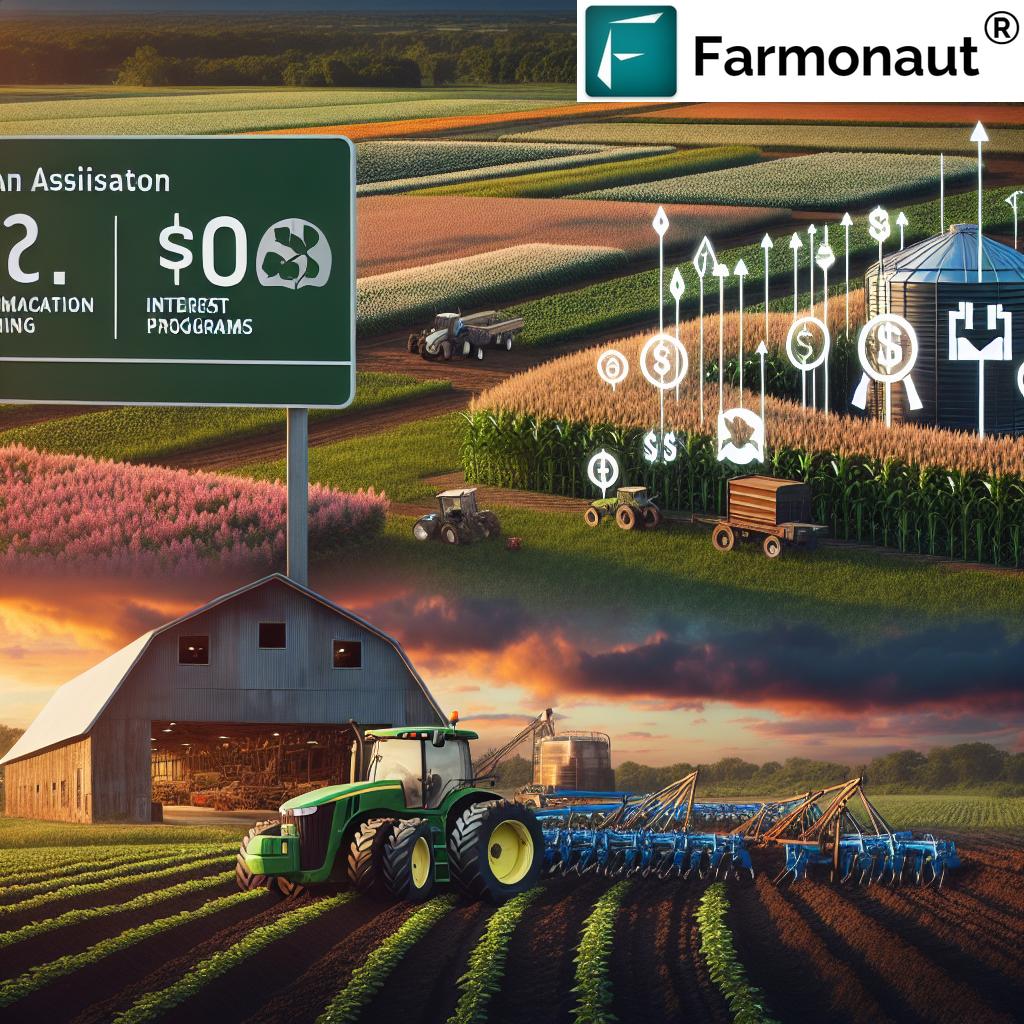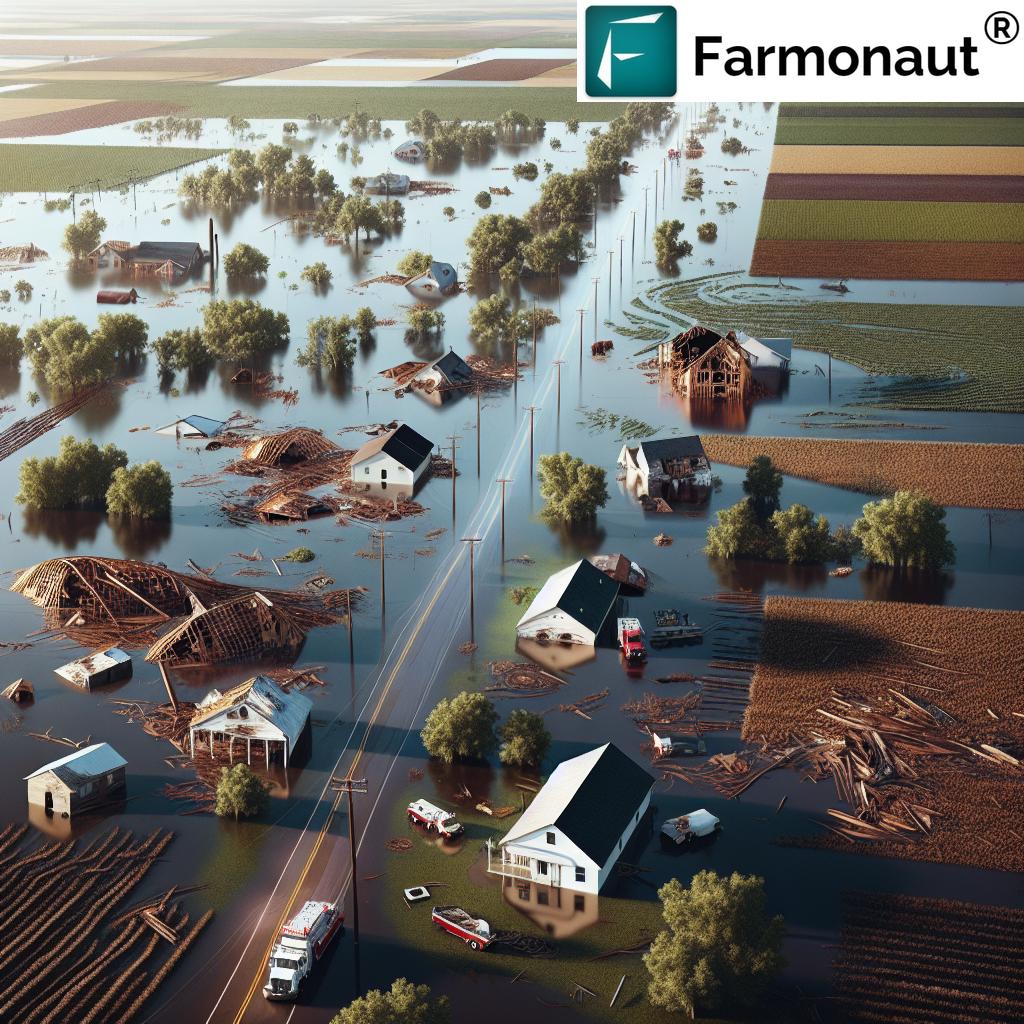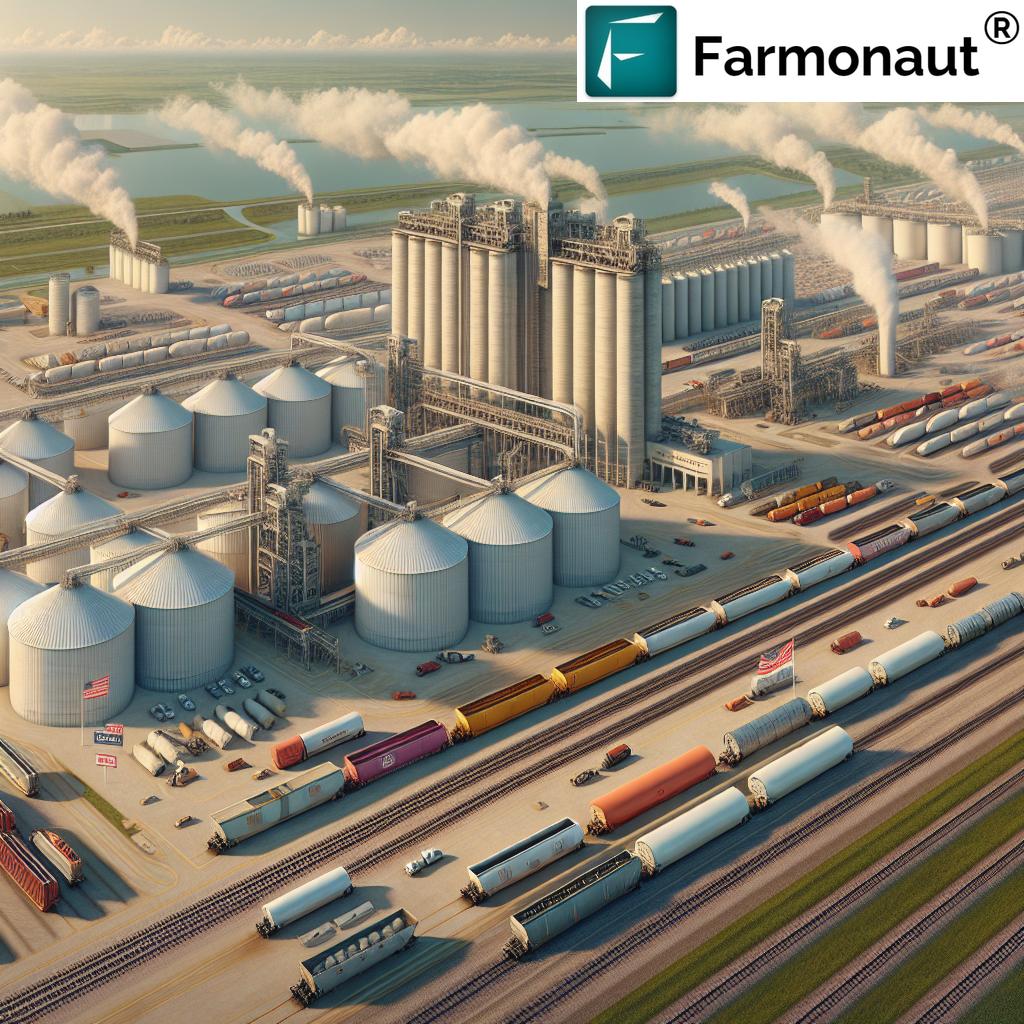Oklahoma Farming: Top Strategies for Thriving Farmland (2025 Guide)
” In 2025, Oklahoma’s wheat production is projected to exceed 110 million bushels due to tech-driven practices. ”
Summary – Oklahoma Farming in 2025: Adapting to Change and Embracing Innovation
Oklahoma’s farming sector is a vital, enduring cornerstone of the state’s economy, culture, and rural life. In 2025, Oklahoma farming continues to evolve, challenged by shifting climate patterns, economic shifts, and a surge of technological advancements. Across 31 million acres of largely privately owned farmland, producers are embracing precision technologies, data-driven management, and innovative practices to meet changing market demands and environmental realities. This comprehensive guide explores Oklahoma agriculture’s landscape, innovations in crop and livestock production, sustainable water and soil management, and actionable strategies for thriving farmland in the years ahead.
Table of Contents
- Oklahoma Farming Overview (2025)
- Climate & Environmental Challenges Facing Oklahoma Farming
- Top Oklahoma Crops & Crop Performance Table
- Technological Innovations Transforming Oklahoma Agriculture
- Sustainable Land and Water Management Practices
- Oklahoma Agriculture: Economy, Markets & Consumer Trends
- Farmonaut: Advancing Smart Farming in Oklahoma
- Future Prospects & Opportunities for Oklahoma Farmland
- Oklahoma Farmland FAQ (2025 & Beyond)
Oklahoma Farming Overview (2025)
Oklahoma farming has long played a vital role as a cornerstone of the state’s economy, culture, and way of life. In 2025, the agriculture sector continues to adapt, shaped by ongoing technological advancements, climate shifts, and changing market demands.
- Farmland in Oklahoma: The state is home to roughly 31 million acres of farmland—nearly 90% of which is privately owned.
- Diverse Topography: Oklahoma’s landscape features mixed topography—from sandy loams in the west to rich black soils in the east. This diversity fosters a wide range of crops and livestock systems.
- Dominant Crop & Livestock: Wheat remains the state’s dominant crop, consistently ranking Oklahoma among the top wheat-producing states nationwide. Cattle ranching continues to play a significant and complementary role in the region’s landscape, with robust beef, dairy, and hay production.
- Key Crops: In addition to wheat, Oklahoma producers also cultivate corn, soybeans, sorghum, and hay among other specialty crops.
Oklahoma farming today is a blend of tradition and innovation. Farmers are adopting advanced, precision-driven practices while maintaining the culture and way of life that have shaped rural Oklahoma for generations.
Climate & Environmental Challenges Facing Oklahoma Farming
The climate factor is one of the most defining influences in Oklahoma agriculture in 2025. Climate variability, unpredictable weather events, and environmental pressure have a major impact on the health of farmland and long-term agricultural productivity.
- Extreme Weather: Oklahoma has experienced an increased frequency of droughts and extreme weather events—tornadoes, hail, heatwaves—in the past decade, putting pressure on producers to adapt their practices.
- Soil and Water Stress: Water availability, especially in the Ogallala Aquifer region, remains a critical concern for farmers. Over-extraction and depletion threaten long-term irrigated production.
- Soil Conservation: Erosion, salinity (particularly in western Oklahoma), and organic matter loss continue to challenge soil health and crop yield stability.
- Pest & Disease Pressure: Integrated pest management (IPM) strategies are now common to manage both new and existing threats, as changing weather patterns affect pest lifecycles and population dynamics.
- Carbon & Sustainability Demands: There are increasing regulatory and market-based demands for carbon footprint monitoring and sustainable management practices across the sector.
” Over 65% of Oklahoma farms adopt precision agriculture, boosting yields and resource efficiency against changing climate. ”
Strategies for Climate Resilience in Oklahoma Farming
- Conservation Tillage: Minimizes soil disturbance, retaining structure and organic matter.
- Cover Cropping: Keeps soil protected, reduces erosion, fixes nitrogen, and manages weed cycles.
- Improved Water Management: Includes adoption of advanced irrigation technologies and precise scheduling based on soil moisture data.
- Diversification: Integrating multiple crop and livestock systems to spread risk and buffer against unpredictable events.
Oklahoma Farming Innovation & Crop Performance, 2025
| Crop Name | Main Technology Used | Estimated 2025 Yield (tons/acre) |
Climate Adaptation Features | Projected Future Opportunity |
|---|---|---|---|---|
| Winter Wheat | Satellite-based NDVI, Precision Irrigation, AI Forecasting | 1.1 – 1.35 | Heat/drought-tolerant seed, variable rate tech, early detection of stress | ↑ 20% by 2030 (fuelled by export and tech growth) |
| Soybeans | Drones, Data Analytics, Blockchain Traceability | 1.2 – 1.6 | Disease-resistant varieties, climate-smart IPM | Strong market; ↑ 15% by 2030 (climate-driven) |
| Corn | Soil Moisture Sensors, Remote Sensing, Smart Irrigation | 1.8 – 2.4 | Efficient irrigation, precision N management, pest alert systems | Moderate; steady growth & resilient feed market |
| Cotton | AI Pest Management, Variable Rate Spraying, Satellite Mapping | 0.85 – 1.15 | Drought/heat-resistant hybrids; reduced water demand | ↑ Demand in sustainable textiles |
| Peanuts | Remote Sensing, Satellite Yield Monitoring | 1.7 – 2.2 | Deep-rooted for drought tolerance; variable water plans | Niche growth, potential export expansion |
| Alfalfa | App-based Scheduling, Precision Fertility Apps | 4.2 – 5.3 | Multi-cut varieties, efficient irrigation, heat-tolerance breeding | Stable with regional livestock synergy |
Key Takeaway: Oklahoma’s advances in satellite monitoring, precision irrigation, AI, and data analytics are transforming crop yields and climate resilience. Continuous investment in these technologies offers a substantial opportunity for growth and sustainability across the region.
 Monitor your Oklahoma cropland with Farmonaut’s advanced satellite app
Monitor your Oklahoma cropland with Farmonaut’s advanced satellite app
Technological Innovations Transforming Oklahoma Agriculture
The agricultural sector in Oklahoma has seen remarkable change with the adoption of precision technologies and data-driven practices aimed at improving productivity, efficiency, and crop resiliency in 2025.
Key Technological Trends in Oklahoma Farming
- Precision Agriculture: Implementation of GPS-guided tractors, variable-rate application of fertilizers/pesticides, and satellite field mapping drives efficiency and yield.
- Drone Surveillance: Drones are used for real-time monitoring of crop health, stress, pest outbreaks, and soil moisture variations across Oklahoma farmland.
- Satellite Imagery & AI: Remote sensing combined with AI delivers NDVI-based health diagnostics, water stress alerts, and recommendations for variable input application.
- Farm Management Software & Data Analytics: Data collection and analytics support smarter decisions around planting, harvesting, resource planning, and financial management.
- Robotic Automation: Labor-intensive tasks (e.g., seeding, weed control, harvest) are increasingly supported by robotics and automated machinery, particularly on large-scale operations where rural labor pools are shrinking.
Precision agriculture is more than a buzzword in farming in Oklahoma; it is a necessity to ensure adaptability, efficiency, and competitive success. These approaches help to reduce unnecessary input costs, lower environmental impacts, and ultimately meet consumer and market demands for sustainability and transparency.
Explore satellite crop monitoring for Oklahoma: With Farmonaut’s fleet management tools, farms can optimize use of machinery and reduce logistics costs while ensuring better field coverage and crop care across large Oklahoma operations!
Sustainable Land and Water Management Practices
Maintaining the long-term health of Oklahoma farmland requires sustainable management of both soil and water resources—particularly as the state faces ongoing challenges from weather extremes, soil depletion, and aquifer pressures.
Water-Smart Solutions in Oklahoma Agriculture
- Precision Irrigation & Soil Moisture Monitoring: Advanced drip, pivot, and micro-irrigation systems, paired with sensors and satellite analytics, ensure each crop receives tailored hydration based on current and forecasted needs.
- Ogallala Aquifer Protection: Farms in western Oklahoma increasingly rely on satellite and cloud-based platforms to monitor Ogallala drawdown, improving efficiency and sustainability of water use.
Soil Health & Conservation
- Soil Testing & Variable Rate Fertility: Technological advances enable in-depth, zone-based fertilizer application, reducing nutrient runoff, cost, and environmental risk.
- Cover Cropping and Crop Rotation: Integrating winter cover crops and diverse crop rotation increases organic matter, improves infiltration, and combats erosion.
Explore Oklahoma’s climate-smart farming insights: Use Farmonaut’s carbon footprint monitoring tools to track emissions reductions and ensure compliance with state and federal regulations for sustainable agriculture.
Oklahoma Agriculture: Economy, Markets & Consumer Trends
The economic outlook for Oklahoma farming in 2025 reflects both opportunity and risk amidst global market uncertainty, shifting consumer values, and changing trade policies.
- Commodity Markets: Export-driven sectors like wheat and cattle remain major sources of revenue, but price volatility, supply chain disruptions, and international competition influence farm profitability each season.
- Consumer Demands: There’s growing demand for traceable, local, and sustainably grown food. Direct-to-consumer models, farmers’ markets, and value-added products offer both diversification and competitive advantage.
- Farm Diversification: Many producers are integrating specialty crops, organic farming, and agri-tourism into their business plans. Growing sectors include regenerative agriculture, carbon farming, and blockchain-enabled traceability.
- Access to Financing: Satellite and remote sensing-based verification tools streamline loan approvals and crop insurance, enabling more efficient, transparent, and fraud-resistant financial processes.
Enhance supply chain confidence with Farmonaut’s blockchain traceability solutions, ensuring secure, transparent tracking of Oklahoma’s agricultural products from farmgate to market shelf.
Use satellite-based crop loan and insurance verification from Farmonaut to access reliable, real-time assurance for Oklahoma producers and financial institutions!
Advancing to commercial-scale farm operations? Farmonaut’s large-scale farm management platform simplifies Oklahoma’s resource deployment, crop scouting, and field mapping across big acreage.
 Download Farmonaut for Android – Control your Oklahoma farmland remotely!
Download Farmonaut for Android – Control your Oklahoma farmland remotely!
 Get Farmonaut for iOS – Real-time farmland insights on your iPhone
Get Farmonaut for iOS – Real-time farmland insights on your iPhone
Farmonaut: Advancing Smart Farming in Oklahoma
As a satellite technology company, we at Farmonaut empower Oklahoma farmers and agricultural enterprises with advanced, data-driven insights. Our mission is to make satellite-driven solutions affordable and accessible, helping producers across the state improve crop health, resource efficiency, and sustainability.
- Satellite-Based Monitoring: Our platform utilizes multispectral satellite images for precise NDVI vegetation health checks, soil condition monitoring, and even structural infrastructure diagnostics.
- AI & Jeevn Advisory: We offer real-time, AI-powered recommendations, weather alerts, and custom strategies—directly to yours Oklahoma farm dashboard.
- Blockchain Traceability: For supply chain stakeholders in Oklahoma farming, our solutions add transparency, trust, and authenticity to product origins and logistics.
- Fleet/Resource Management: We provide digital tools for optimizing machinery logistics and reducing operational costs on even the largest Oklahoma farms.
- Environmental Impact Tracking: Regulatory compliance, carbon footprint monitoring, and sustainable certification are made seamless with our environmental analytics.
- API Integration: With Farmonaut’s Satellite Data API and API Developer Docs, businesses and software developers in Oklahoma can integrate our robust data streams directly into their in-house platforms and mobile apps.
Whether you are a farmer, enterprise, government, or financial institution in Oklahoma, Farmonaut’s scalable tools and advisory platforms are designed to support your real-time operations, regulatory compliance, and business strategy for 2025 and beyond!
Future Prospects & Opportunities for Oklahoma Farmland
Looking ahead to 2025 and beyond, Oklahoma farming faces both challenges and promising new opportunities. While changing climate patterns and market volatility will continue to test traditional approaches, the ongoing embrace of technology and innovation stands to unlock substantial value for the state’s producers and rural communities.
- Regenerative & Carbon-Smart Agriculture: Practices such as cover cropping, carbon sequestration, and advanced no-till are receiving greater institutional support and consumer premiums.
- Expansion of Tech-Driven Models: AI, satellite analytics, and drone integration will become baseline for Oklahoma’s leading farms, driving new productivity benchmarks and climate resilience.
- Agri-Tech Entrepreneurship: New business models—farm management platforms, remote advisory apps, custom data services—are spawning fresh opportunities in both rural and urban areas.
- Specialty and Diversified Cropping: Innovations in genetics and data-driven management are reducing entry barriers to specialty markets such as organic, non-GMO, and niche export crops.
- Water & Resource Efficiency: With increased regulatory attention on water use, those investing in precision systems and satellite monitoring will be best positioned for long-term viability.
Key Takeaways for Oklahoma Farming in 2025
- Adopt precision farming technologies to boost yield and resource efficiency.
- Invest in soil and water monitoring tools for sustainable management of Oklahoma farmland.
- Embrace climate-smart practices such as regenerative agriculture and diversified cropping systems.
- Leverage real-time satellite insights via Farmonaut’s platform for strategic field operations and compliance.
- Monitor carbon emissions and increase supply chain transparency through blockchain and advanced traceability.
- Track emerging markets and direct-to-consumer trends to diversify and capture new revenue streams.
Oklahoma Farmland FAQ (2025 & Beyond)
A: Oklahoma comprises 31 million acres of farmland, with nearly 90% privately owned. Farms vary in size, but the trend is toward fewer, larger operations using tech-driven management.
Q: What are the biggest climate challenges for Oklahoma farmers?
A: Key challenges include prolonged droughts, increased heat waves, extreme weather events, soil erosion, and water scarcity—especially in the Ogallala Aquifer region.
Q: How are Oklahoma producers adopting new technology in 2025?
A: Over 65% of Oklahoma farms now use some form of precision agriculture technology, including satellite imagery, drone monitoring, digital field mapping, and real-time analytics to improve yield and resource efficiency.
Q: Which crops are most important and what innovations support them?
A: Wheat, soybeans, corn, cotton, peanuts, and alfalfa are top crops. Innovations range from AI-powered pest management (cotton), precision irrigation (corn, wheat), and blockchain traceability (Farmonaut’s product traceability) in soybean and livestock systems.
Q: How is Farmonaut helping Oklahoma agriculture?
A: We provide satellite-driven crop health monitoring, AI advisory, blockchain traceability, and resource management tools. Our accessible platform supports Oklahoma farms, agribusinesses, and institutions in their drive for productivity, sustainability, and transparency.
Q: How can Oklahoma farmers access these technologies?
A: Producers can use Farmonaut services through web and mobile apps or integrate satellite insights via Farmonaut’s API.
Q: What future opportunities exist for Oklahoma farmland?
A: Growth areas include regenerative and specialty cropping, carbon-smart farming, agri-tech startups, digital land management, and export market expansion in value-added products.
 Start monitoring your Oklahoma farm with Farmonaut Web App
Start monitoring your Oklahoma farm with Farmonaut Web App











